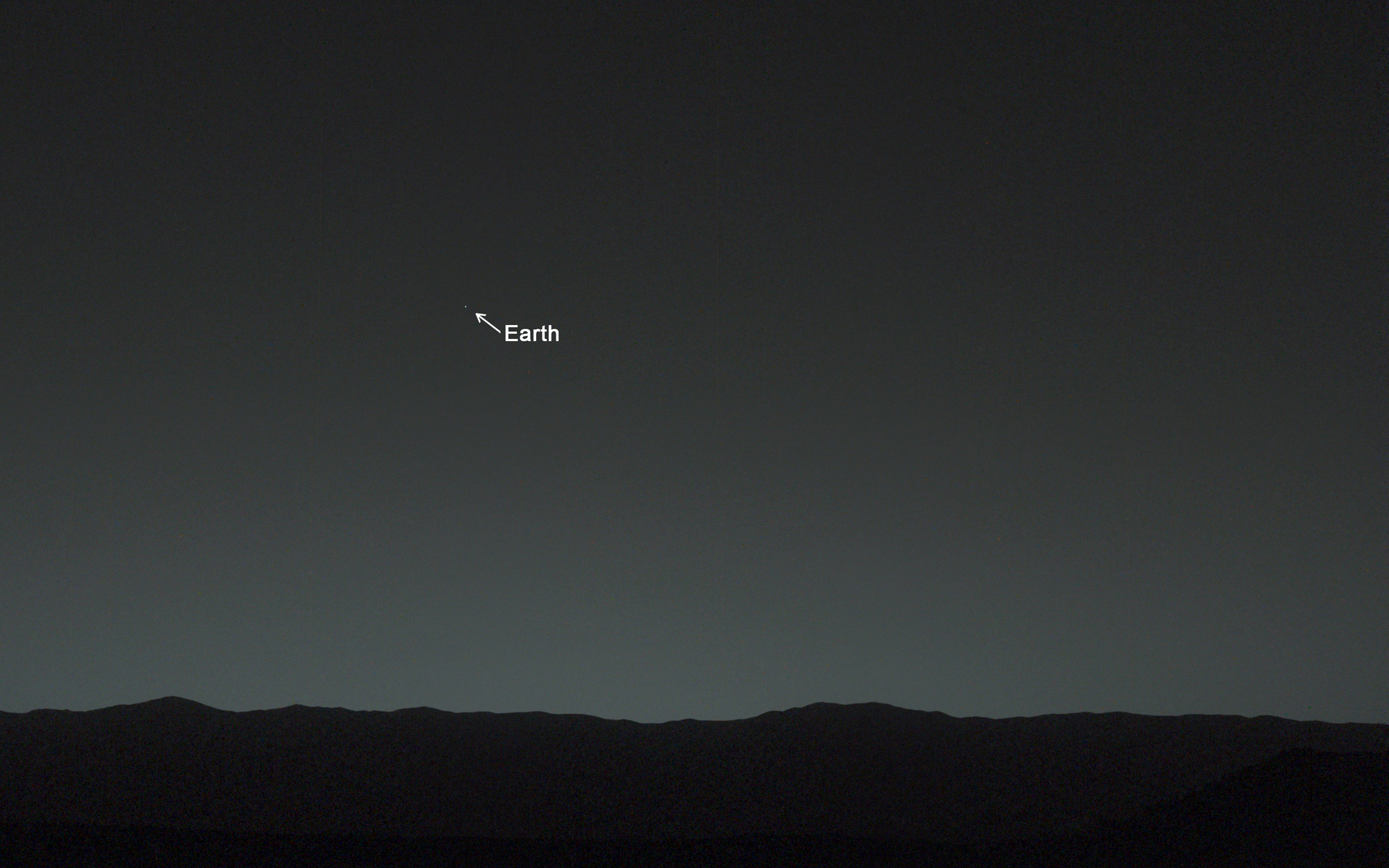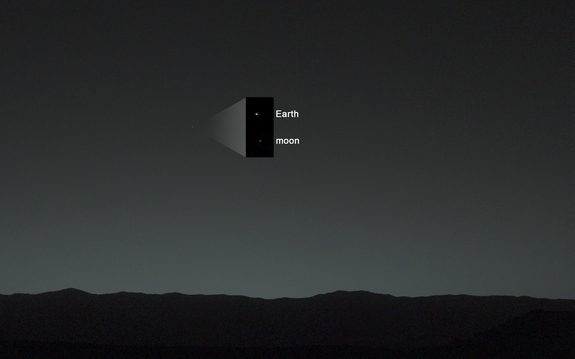Curiosity Rover Sees Earth from Mars for 1st Time (Photos)
NASA's Curiosity rover on Mars has captured its first view of Earth from the surface of the Red Planet — a striking image that shows our home planet as a bright light in the Martian sky, with the moon shining nearby.
The Curiosity rover photographed Earth from Mars on Jan. 31 using the left-eye camera on its head-like science mast. You can see a video of Curiosity's Earth-from-Mars images here.
The rover apparently watched the Martian sunset, then photographed Earth in the night sky about 80 minutes later, NASA officials said in an image description. [Amazing Photos of Earth from Space (Gallery)]
"A human observer with normal vision, if standing on Mars, could easily see Earth and the moon as two distinct, bright 'evening stars,'" NASA officials said in the image description. Aside from some processing to remove the effects of cosmic rays, the Curiosity photographs are unmodified, they added.
The Mars rover Curiosity snapped the photos of Earth from Mars during its 529th day on the Martian surface. The $2.5 billion rover has been exploring the vast Gale Crater on Mars since August 2012.
Curiosity is not the only rover to photograph Earth from the surface of Mars. In 2004, NASA's Mars rover Spirit snapped an epic "You Are Here" photo showing Earth from the Martian surface. That photo marked the first time a spacecraft had photographed Earth from the surface of another world other than the moon.
Several other deep-space probes have photographed Earth from even farther out.
Get the world’s most fascinating discoveries delivered straight to your inbox.
NASA's Cassini spacecraft has photographed Earth and the moon from Saturn on more than one occasion, most recently in July 2013. In 2010, the NASA Messenger spacecraft currently orbiting Mercury photographed Earth and other planets as part of a solar system portrait as seen from the closest planet to the sun.
The most famous photograph of Earth from space may be the so-called "Pale Blue Dot" view captured by NASA's Voyager 1 spacecraft. That image was released by NASA on Feb. 14, 1990.
Email Tariq Malik at tmalik@space.com or follow him @tariqjmalik and Google+. Follow us @Spacedotcom, Facebook and Google+. Original article on Space.com.

Tariq is the editor-in-chief of Live Science's sister site Space.com. He joined the team in 2001 as a staff writer, and later editor, focusing on human spaceflight, exploration and space science. Before joining Space.com, Tariq was a staff reporter for The Los Angeles Times, covering education and city beats in La Habra, Fullerton and Huntington Beach. He is also an Eagle Scout (yes, he has the Space Exploration merit badge) and went to Space Camp four times. He has journalism degrees from the University of Southern California and New York University.






